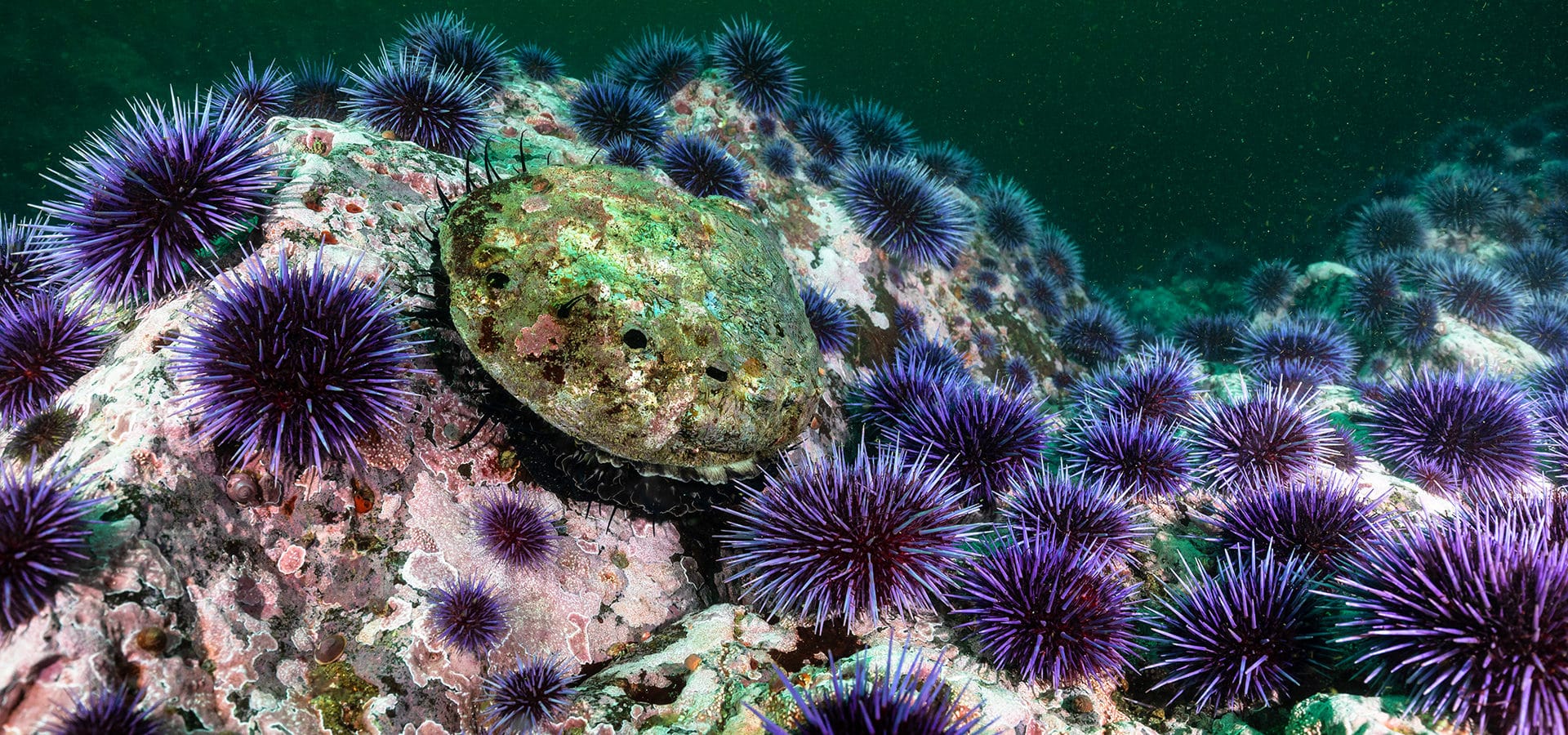These Seasoned California Seafood Companies Balance Sustainability and Success
Stewards of the sea.
-
CategoryFarm + Table, Foodie Spots, Makers + Entrepreneurs, Sustainability
-
Written byBonnie Graves
-
Above image byBrent Durand
Imagine, if you will, what motivates a diver to risk his or her life in the shark-infested kelp forests of California’s northern coast. Imagine that you must dive without SCUBA equipment such that lack of oxygen might kill you as quickly as a great white—provided you can even cut your way out of the kelp stipes that relentlessly wrap around your legs in the pounding underground currents.
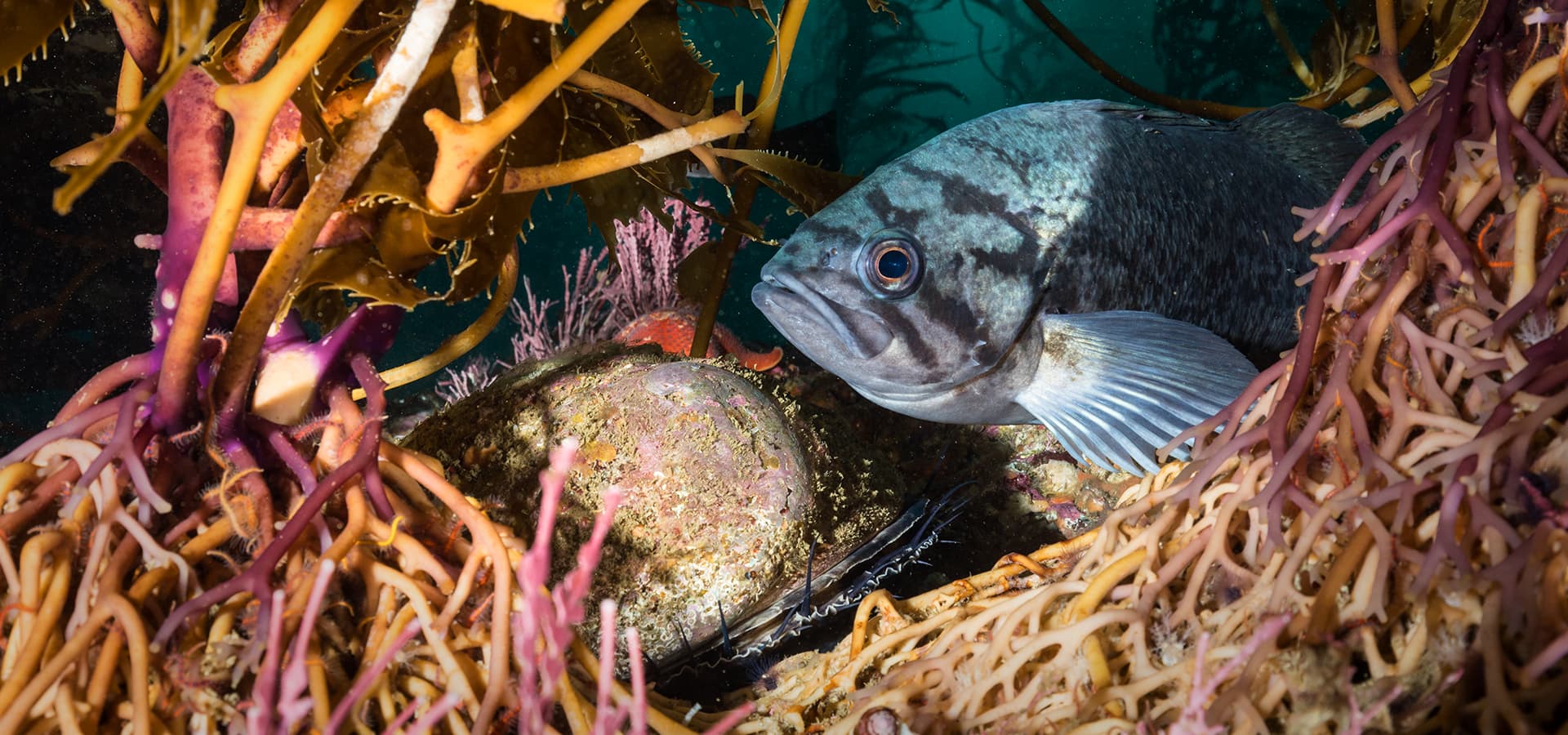
ABOVE: Image by Brent Durand
For those who free dive in pursuit of California’s coveted red abalone, these are risks that are outweighed both by pure adrenaline and financial remuneration. Once plentiful among the seafood shacks of California’s coastline, our native abalone stocks have seen steady depletion to the point of near extinction. The Asian exotic food industry has also contributed to a robust black market that further endangers the abalone.
Once limited to three abalones per day per diver, a decision was made in 2018 to ban recreational abalone diving until April 2021. These slow-growing sea snails are starving and failing to reproduce, due in part to the withering kelp forests that shelter and feed them. The red abalone—prized for its meat, its iridescent shell and its uniquely shaped pearls—has been an essential part of California coastal commerce from the time of native populations to today. Currently, it is threatened by an invasion of purple sea urchins and warming ocean temperatures. What can be done to save it?
Sustainability is a word that gets overused and then some, but for American Abalone Farms, it’s both a mission statement and a mantra. Located in Davenport, this producer is one of the few that is successfully spawning and farming red abalone in the cold waters of Monterey Bay.
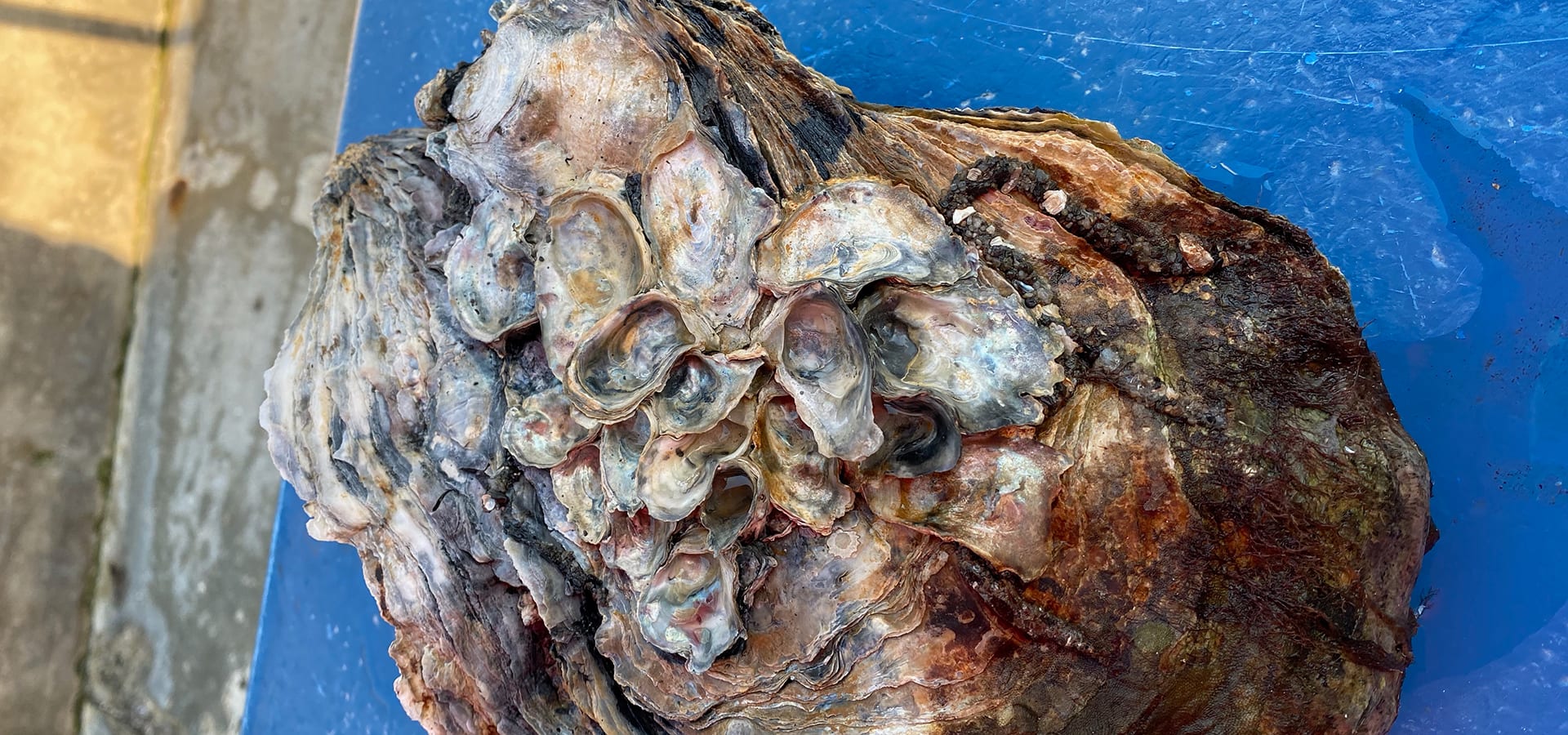
Founder and marine biologist Tom Ebert has a lifelong connection to this ancient mollusk. Since the opening of his aquaculture business in 1992, he has spawned more than 1 million red abalones. Currently, American Abalone Farms is one of only four farms actively working to grow abalone in California. While the official recreational sport remains off-limits for abalone divers, the fragile native population is vulnerable to poachers—making domesticated production all the more essential to ensure the species’ very survival.
Tom’s sea snails are raised exclusively on a diet of native Monterey Bay kelp. While the process of raising them to maturity is faster than in the wild–American Abalone’s farmed products take about three years to grow to a marketable size of 3 inches as opposed to nearly 20 years in the ocean–it’s a challenging business model. Endorsement from the Monterey Bay Seafood Watch and a resurgent interest from chefs have allowed Tom to host a weekend farmers market for shellfish enthusiasts in addition to his wholesale business. For anyone interested in sustainable shellfish production, a visit to Davenport is a chance to experience one of California’s most ancient seafood staples.
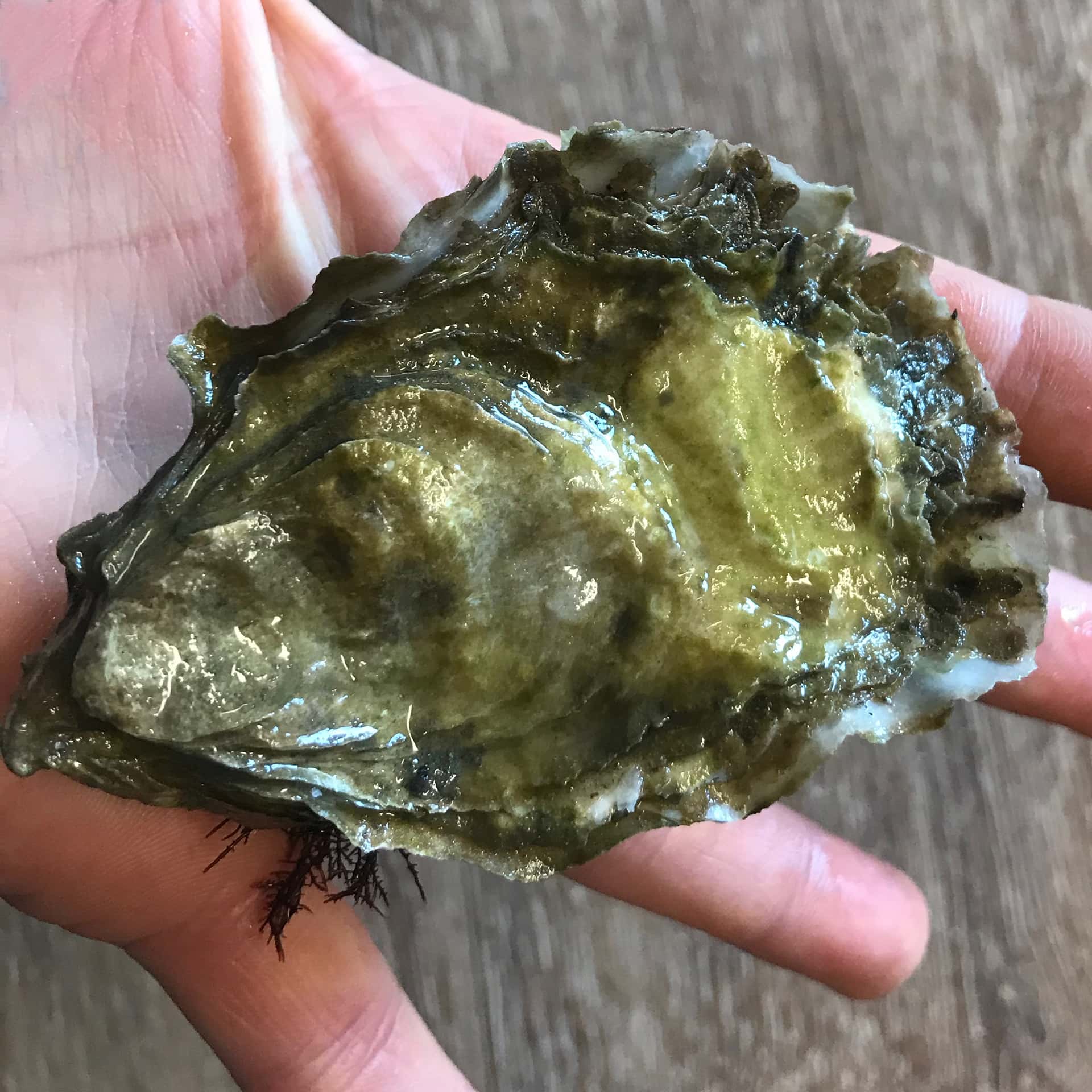
Further north along Highway 1 in Tomales Bay, we find the focus shifting from sea snails to bivalves—specifically oysters. Established in 1909, the Tomales Bay Oyster Company is California’s longest-running commercial shellfish operation. By the mid-1850s, entrepreneurs drawn by gold in the hills realized there was money to be made in oyster production as well.
While native Pacific bivalves were harvested from the sea, other oyster varieties from Washington and the East Coast were brought in to be farmed as well. By 1880, the United States was the largest producer of commercial shellfish in the world. Pollution nearly decimated the industry, though, when typhoid fever linked to contaminated aquacultural water broke out in San Francisco at the turn of the century.
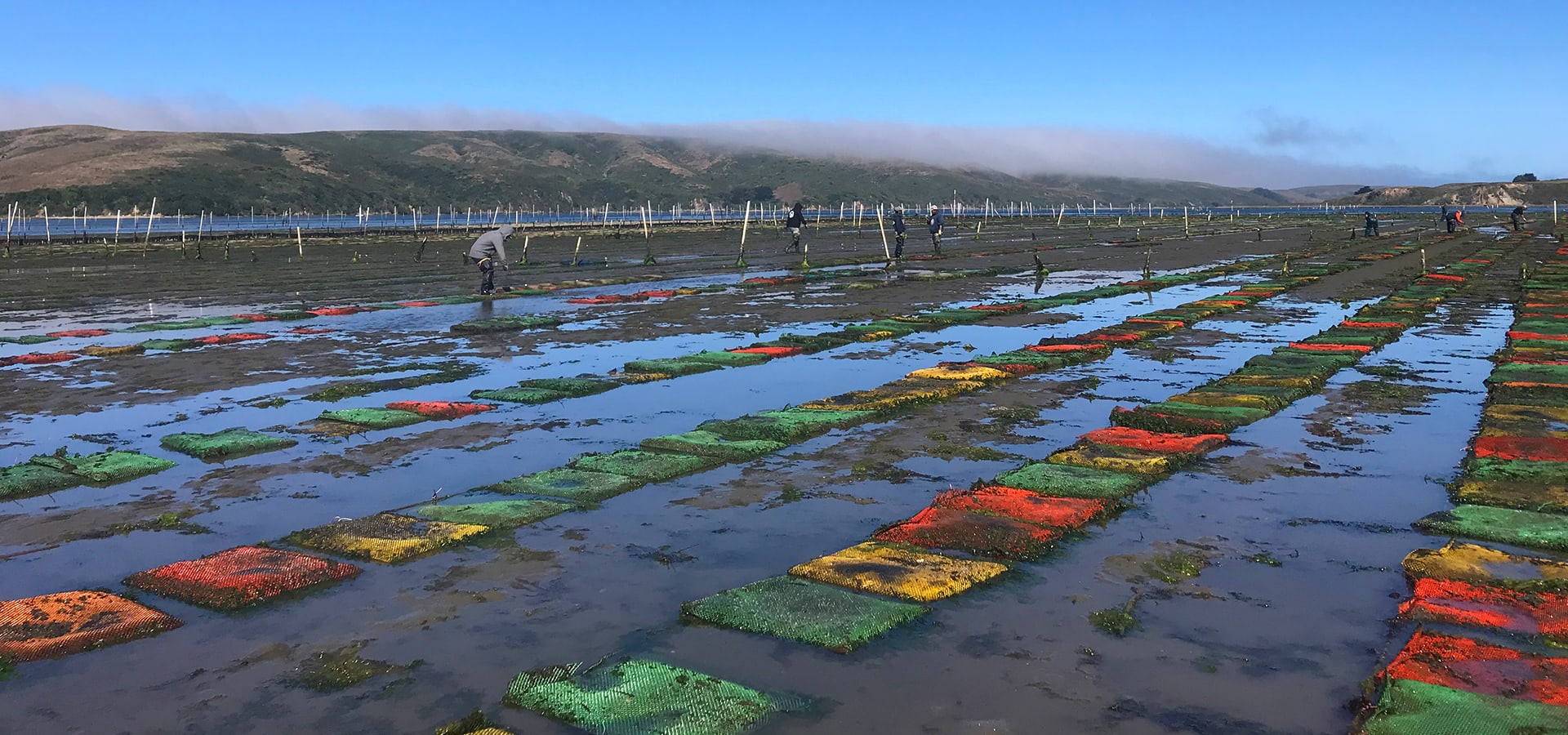
A search for cleaner, safer water brought investors to the pristine Tomales Bay, where the first oyster beds were seeded nearly 150 years ago. Legendary oysterman Oscar Johannson tended the Tomales Bay tidelands from 1926 to 1988, when the Tomales Bay Oyster Company was sold to its current owners.
Pack both a picnic and a shucking knife of your own if you plan to make a weekend visit to Tomales Bay. There is truly no fresher oyster to be had on the West Coast, and TBOC’s signature Golden Nugget oysters are its flagship product. Grown in a unique aquaculture environment in which the beds are tumbled to mimic the tides of the ocean, the Tomales Bay oysters are a favorite of chefs nationwide—prized for their saline tang and tender meat.
Take some cash, as they don’t accept credit cards. Oysters are sold by size, and they range in price from $65 to $100 for a bag of 50 oysters or $17 to $30 for a dozen. Hot sauce, lemons and cocktail sauce are available to purchase as well. But for purists, the only requirements to enjoy Tomales are a knife and the breeze off the bay.
Friday Finds: 5 Summer Travel Essentials
Five vacation-approved items for your summer adventures.
Why in the Hell Would California Take on Colombia?
It’s new, scant and expensive, but some growers think cultivating coffee could be the Golden State’s next great crop.
Hey, Weekend: Checking in to Lovingly Revived Motor Lodges
Roadside attractions.
Get the Latest Stories




